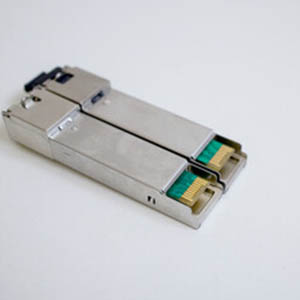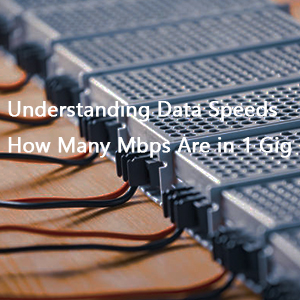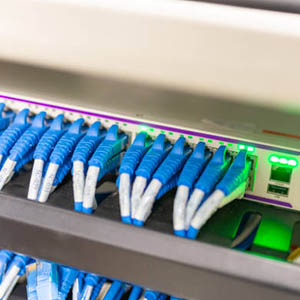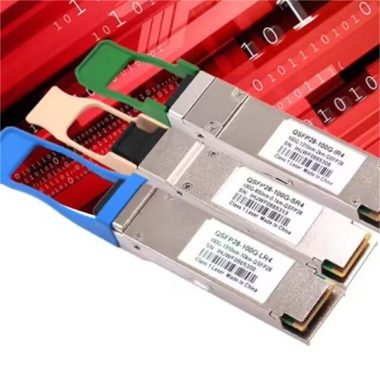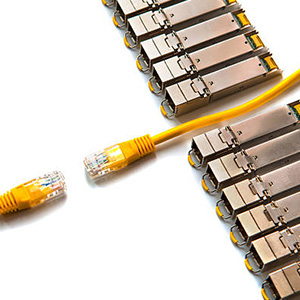As a classic optical module product, SFP56 not only performs well in data transmission speed and distance, but also has been recognized by users in terms of ease of use and stability. This article will conduct an in-depth analysis of SFP56 from multiple perspectives and explore its classic interpretation in modern communications.
- Introduction
- Getting to know about 50G
- What is SFP56 ?
- Conclusion
Introduction
During modern times – telecommunication technology has evolved with faster data rates in mind. As the need for enhanced connectivity and swift data transfer continues to surge, the cornerstone of this lies in the evolution of transceivers. The focus today is to achieve faster data rates not only through new emerging technologies but also by upgrading long-forgotten technologies. Years ago, optical transceiver manufacturers introduced the SFP form factor, the main advantage of which was its compact size, enhancing port density on telecom equipment. Nowadays, a transceiver with the same physical dimensions as the SFP form factor can achieve a 50G data rate, thanks to the PAM4 technology and enhanced form factor known by the abbreviation SFP56.
Getting to know about 50G:
We have already heard about 200G, 400G, 800G and maybe even thinking about higher data rates, so why do we speak about 50G just now? The demand for bandwidth has led the industry to reach higher data rates as soon as possible. This has resulted in the introduction of multilane transceivers, and only after the technology has matured does the industry consider the possibilities of single-lane transceivers.
Engineers always try to find a more cost effective solution for network designers and service providers. As multilane modules have already demonstrated their performance, we now witness the emergence of a single-lane version of 50G that is more compact, less expensive, and consumes less power.
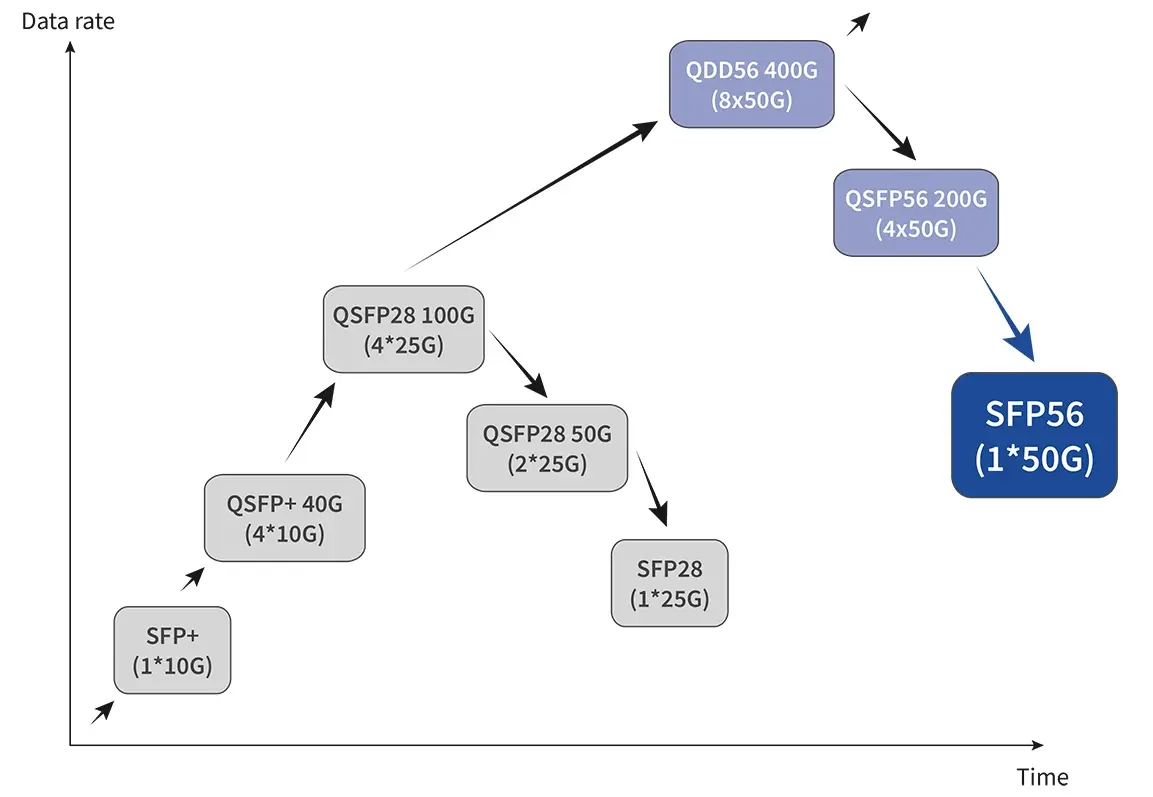
50G SFP56 is a chance to double the data rate of existing SFP28 links. SFP56 optimized construction minimizes insertion loss and cross talk, and the solution is backward compatible with existing SFP+ and SFP28 ports.
Primary applications for these products include server to switch and switch to switch 50G Ethernet connections, as well as future 5G wireless applications.
What is SFP56?
Some time has already passed since NRZ modules were first introduced, but the demand has still risen up, the development of PAM4 QSFP-DD modules was started and was pioneering in such high density data rates in small form-factors. SFP, a small form factor’s turn was to embrace new technology previously only used in High density optical transceivers, the trick was to lower the channel count to more suitable for the old and reliable SFP form factor. Unlike other optical transceivers which use PAM4 modulation technology on a few optical lines. SFP56 uses a 25G NRZ electrical flow, modulated with PAM4 on a single wavelength, to achieve 50G PAM4 modulated optical signal. A logical question may arise, if such new technology even has some similarity or interchangeability with older SFP variants(SFP+/SFP28), well in this case, SFP56 modules are compatible with older SFP ports, but for an equipment to fully utilize the power of 50G data rate over PAM4, a special type of switches has to be used. Thankfully most of modern-day build equipment already comes with 50G SerDes built in into their ASICs. Backwards compatibility is as well possible, you could easily use the SFP+ or SFP28 modules in a port specifically designed to be used by 50G modules.
So in short, you can call this new technology, used in an older SFP+ caging. But in such a small footprint, it provides double the data rate of previously used SFP28 modules which in turn will provide even faster bandwidth for data centers and 5G base stations.
Conclusion
The demand for higher bandwidth has steered the industry towards accelerated data rates, leading to the evolution of multilane transceivers. However, our exploration into 50G brings us to a groundbreaking revelation — the potential of a single-lane, single-wavelength technology.
Engineers, driven by the desire for cost-effective solutions, have not only witnessed the performance of multilane modules but are now embracing a more compact, cost-efficient, and energy-conserving single-lane version of 50G. The 50G SFP56, characterized by its optimized construction and backward compatibility, presents an opportunity to double the data rate of existing SFP28 links. Its applications extend to pivotal connections such as server-to-switch and switch-to-switch 50G Ethernet links, along with its role in shaping the future landscape of 5G wireless applications.
In final thoughts, the journey from the introduction of the SFP form factor to the advanced SFP56 form factor – reshapes the industry’s commitment to speed, efficiency, and pushing the boundaries of what’s possible. The 50G SFP56, with its technology, promises to transform the narrative of data transmission, providing a seamless bridge between the old and the new telecommunication technology.
Will be happy to hear your requirements – contact us!

